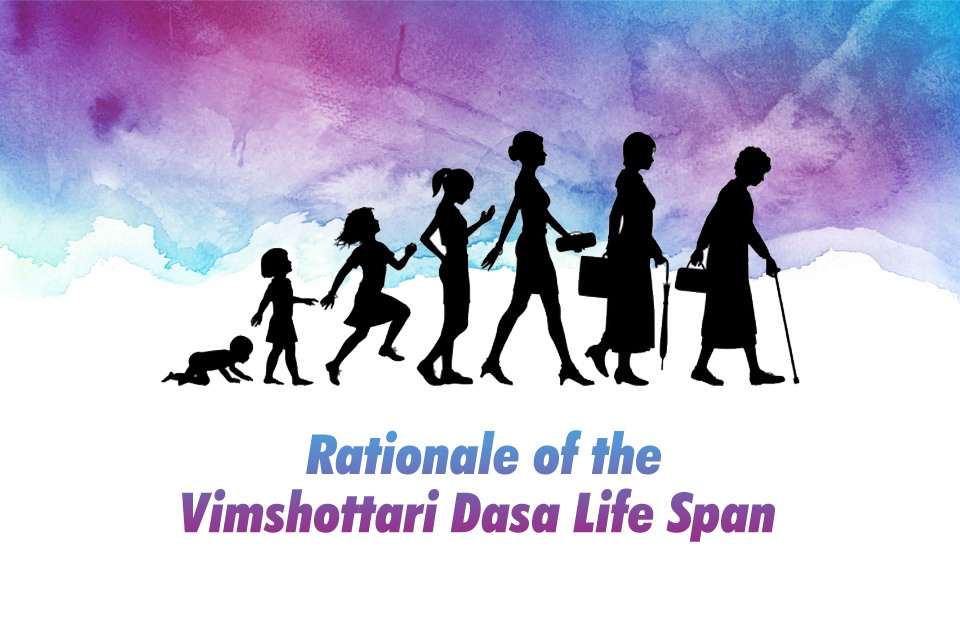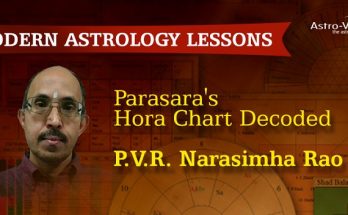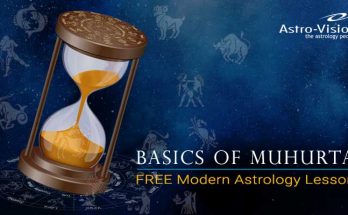Introduction
The maximum period of human life is 120 years according to classical texts. On what basis is this assumption made?
There is an eternal truth that has to be highlighted and which is nothing but the fact that Nature is the true embodiment of equality. For example, when the river flows, anybody who approaches it is free to enjoy the water in it.
Let us examine against this background of Nature’s great vision of equality as to the period of time required by all the seven planets to get equal duration of time to manifest their influence on human life.
The Sanskrit word Ucha stands for exaltation or maximum power and Neecha stands for debilitation or minimum power. The Sun spends a total of 120 months in Aries in its sign of exaltation in the course of 120 years. That is for 10 years. Similarly, the Sun may have remained in Libra, its sign of debilitation, for 10 years during the course of 120 years. The Sun would be spending in each Rasi or Zodiacal sign a period of 10 years during the course of 120 years. So it is a decade that the Sun spends in each Zodiac sign during the period of 120 years.
The Moon spends almost two and half days in a Zodiacal sign during a period of one month. So in one year the Moon spends one month in its exaltation sign Taurus (2nd house). At this rate, the Moon will spend 120 months during 120 years in Taurus. So it is again a period of 10 years that the Moon spends in its sign of debilitation Scorpio (8th house) Therefore, the Moon spends 10 years or a decade in each of the 12 signs during 120 years.
The sign Capricorn (10th house) is Mars’ exaltation place while Cancer (4th house) is its sign of debilitation. Mars spends one and a half months time in each sign during its revolution round the Zodiac. It takes almost 18 months to make one revolution. In this way, Mars makes 80 revolutions during 120 years. At this rate, Mars spends a total of 120 months in each sign. Thus it takes 10 years per sign and a total of 120 years for Mars to exhibit his prowess that equals with the Sun and the Moon.
Mercury’s exaltation sign is Virgo (6th house) and debilitation sign is Pisces (12th house). He spends 7 days per Zodiacal sign and completes one revolution in 88 days and 4 full revolutions in year. So after 120 years, he may complete more than 480 revolutions in 3360 days.
… Saturn represents the real portfolio of one’s life period and perseverance. Saturn takes 30 years to complete an orbital revolution. So he spends two and half years in each sign, including its signs of exaltation and debilitation in this period of 30 years. So Saturn spends a decade in each sign and completes 4 revolutions during 120 years. Thus Saturn also maintains a decade of equality during the period of 120 years.
We may not have accounted for 30-40 full revolutions during these 120 years and if we count them also, Mercury would have spent 3650 days per sign, including its exaltation and debilitation signs. So Mercury also spends a decade in each sign during 120 years on par with the other planets.
Jupiter takes 12 years to complete one revolution of the Zodiac and spends 10 years in each Zodiacal sign in the course of 120 years. Jupiter spends a decade each in its exaltation sign Cancer and in Capricorn its debilitation sign. Thus Jupiter supports the equality of bestowing its power through a decade on each sign on par with other planets.
Venus takes 240 days for making one full revolution in its orbit. So in 10 years’ time, Venus makes 15 revolutions. So he spends more than 3600 days in a sign, including Pisces, its exaltation sign, and Virgo, its debilitation sign Thus Venus takes a decade to demonstrate its skills over the living and non-living mortals on earth on par with the other planets.
Let us consider the case of Saturn who represents the real portfolio of one’s life period and perseverance. Saturn takes 30 years to complete an orbital revolution. So he spends two and half years in each sign, including its signs of exaltation and debilitation in this period of 30 years. So Saturn spends a decade in each sign and completes 4 revolutions during 120 years. Thus Saturn also maintains a decade of equality during the period of 120 years.
It is clear therefore that the seven planets have an equal influencing period of one decade of stay in each Zodiac sign and assert all their influences during the course of 120 years. This period of 120 years is what is considered as the limit to human life in Indian astrology. It is also a fact that this period of 120 years depends on the orbital period of all the planets and is a time frame during which all planets get an equal share of one decade in all the 12 signs during which they are able to demonstrate their prowess. It is important to note the duration of the period as one decade. A decade is the term equivalent to the Sanskrit word Dasa meaning a unit of number ten.
There is a high probability of a surprising event of synchronization which has to be considered. The planets make whole or integral number of revolutions with respect to their current positions in 120 years and return more or less to these same positions . . . such a synchronizing element also may have led to fixing 120 years as the optimum span of human life.
It is also important that this same unit of ten years is what is attributed to the period of Moon according to the Nakshatra Dasa scheme based on the 27 Nakshatras defining the Zodiac. The individual period of each planet is referred to as a Dasa or life stage of the planet. So considering the importance of this period of ten years as an exhaustive way of experiencing all possible outcomes of the planets, the limit of life period could have been fixed at 120 years. There is a high probability of another surprising event of synchronization which has to be considered. The planets make whole or integral number of revolutions with respect to their current positions in 120 years and return more or less to these same positions. May be such a synchronizing element also may have led to fixing 120 years as the optimum span of human life!
Courtesy: MODERN ASTROLOGY (Author: R. Purushothaman Nair)







